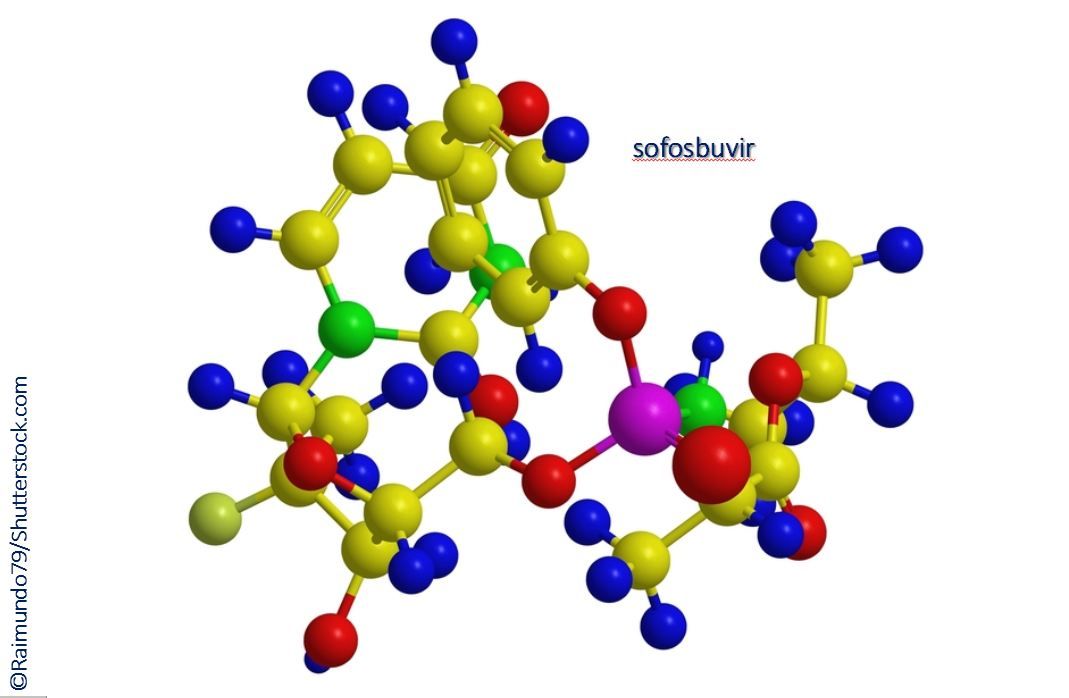Sofosbuvir Regimens Benefit Hard to Treat Patients with Both HIV and Hepatitis C
Favorable results seen with sofosbuvir-containing regimens in these complex patients need to be tempered with the high potential for adverse drug interactions.
©Raimundo79/Shutterstock.com

New therapeutic strategies using the direct acting antiviral (DAA) sofosbuvir (SOF) may offer the first real hope of eradicating hepatitis C virus (HCV) in people who already carry the human immunodeficiency virus (HIV), according to a study by Li et al,1 published in a January issue ofVirology Journal. Sofosbuvir was recently approved for the treatment of HVC genotypes 1-4, although the infection clearance rates and toxicities to these therapies in the increasing co-infected HCV/HIV population are not known.
Special challenges
Nearly 7 million people worldwide are co-infected with both HIV and HCV, putting them at high risk of serious liver disease, one of the most significant causes of morbidity and mortality unassociated with the original HIV infection.2
The simultaneous management of the two chronic infections has been hampered by the adverse effects associated with different protease inhibitors used for HIV and HCV, as well as clinically significant drug interactions observed between them.3 More importantly, the standard HCV therapy of pegylated interferon plus ribavirin (RBV) has not demonstrated satisfactory results in clinical studies. While cure rates for HCV genotypes 2 and 3 were in the range of 50%-70%, clearance of HCV genotypes 1 and 4 was achieved in only 18% to 38% of patients co-infected with HIV.4,5 The advent of new DAAs has offered significant improvements in HCV clearance rates with much lower toxicities than standard therapies, but these have not been tested in the presence of HIV.
Sofosbuvir therapies in co-infection
Li and colleagues identified 7 studies (from a total of 56) that met inclusion and exclusion criteria for analysis of a subpopulation of 1167 patients (aged 18-75, 948 male) with coexisting HIV and HCV infections. All but 147 patients in the cohort had never received previous HCV treatment.1
Using sustained virologic response at 12 weeks (SVR12) as a measure of DAA efficacy, the investigators reported a pooled rate of 94% among subgroups by genotype 1-4. Comparison by treatment history showed lower rates among previously untreated compared to previously treated patients (86% and 96%, respectively). Combinations of DAAs produced the highest SVR12 rates, with the combination of SOF plus other DAAs higher than with SOF/RBV.
One of the main issues with current therapy is the high rate of adverse events (AEs) associated with these drugs, particularly in combination therapies. Pooled estimates of the safety of SOF combinations from 5 of the 7 studies showed insignificant rates of discontinuation (2.5%), and serious AEs were reported at a rate of 2.8%, which was also not considered significant. The pooled rate of all AEs across 6 studies was still significant (67.8%) with the most consistently reported symptoms being fatigue, insomnia, asthenia, headache, diarrhea and nausea. When SOF was combined with RBV therapy, these rates increased to 89%.
Overall, the authors found any therapy including SOF to be effective against all 4 genotypes of HCV, making it an “attractive target for anti-HCV treatment.” Six of the 7 studies the investigators evaluated showed better efficacy and tolerance to SOF combined with other DAA therapies than RBV. Li and colleagues pointed out that the high rates of AEs to SOF therapies within the more complicated scenario of HCV co-infection with HIV suggests the need for clinicians to carefully document all drugs and dosages, and to be aware of the high potential for adverse drug interactions and side effects in this special population.
References:
1. Li G, Zang K, Zhang G, Zhu D, Deng X. Efficacy and safety of sofosbuvir-containing regimens in patients co-infected with chronic hepatitis C virus and human immunodeficiency virus: a meta-analysis. Virol J. 2018;15:19.
2. Soriano V, Vispo E, Labarga P, Medrano J, Barreiro P. Viral hepatitis and HIV co-infection. Antiviral Res. 2010;85:303-315.
3. Rockstroh JK. Optimal therapy of HIV/HCV co-infected patients with direct acting antivirals. Liver Int. 2015;35:51-55.
4. Rockstroh JK, Bhagani S. Managing HIV/hepatitis C co-infection in the era of direct acting antivirals. BMC Med. 2013;11:234.
5. Vogel M, Rockstroh JK. The treatment of chronic hepatitis C virus infection in HIV co-infection. Eur J Med Res. 2009;14:507–515.